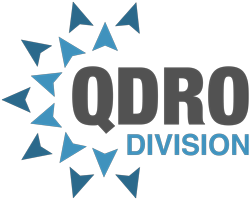Whenever you combine and equalize accounts-what you are doing is mathematically saying that $1 in investments in one account is equal to $1 in investments in the other account-which is mathematically inaccurate-the degree to the inaccuracy depends on the investments, but one party will be ‘shorted’ on the investment gains and the other party will receive a ‘windfall’. Here is a fake example:
Wife has an account worth $50,000 as of date of separation
Husband has an account worth $100,000 as of date of separation
To “save on fees” they agree not to QDRO both accounts, but to instead award wife 25% of husband’s account (Thinking both parties will end up “equal” with $75,000, each).
At the time of the QDRO division a year has passed and Wife’s account performed at a 10% market rate (current value $55,000) and Husband’s account performed at a 20% market rate (Current value $120,000). Neither party contributed or withdrew funds.
Wife receives her 25% interest in husband’s account, as promised, and receives $30,000 from the $120,000 in investments
The end result is:
Wife now has $85,000
Husband now has $90,000
If both accounts were QDRO-ed individually, the additional QDRO fee would be about $750 ($375 each) and both parties would receive $87,500.
End result: Wife saved $375 on 1/2 the QDRO fees and lost $2,500 in market appreciation. (and husband saved $375 on QDRO fees and received a windfall of $2,500)
Obviously-I’m biased as a QDRO attorney, but that doesn’t mean I’m wrong. Be careful equalizing accounts-the larger the accounts and the more varied investments between the accounts, the larger the “error factor” will be compared to dividing the accounts separately by ‘standard QDRO’ (which provides an accurate community split of not only the underlying investments as of separation, but also the proportional gains/losses).
